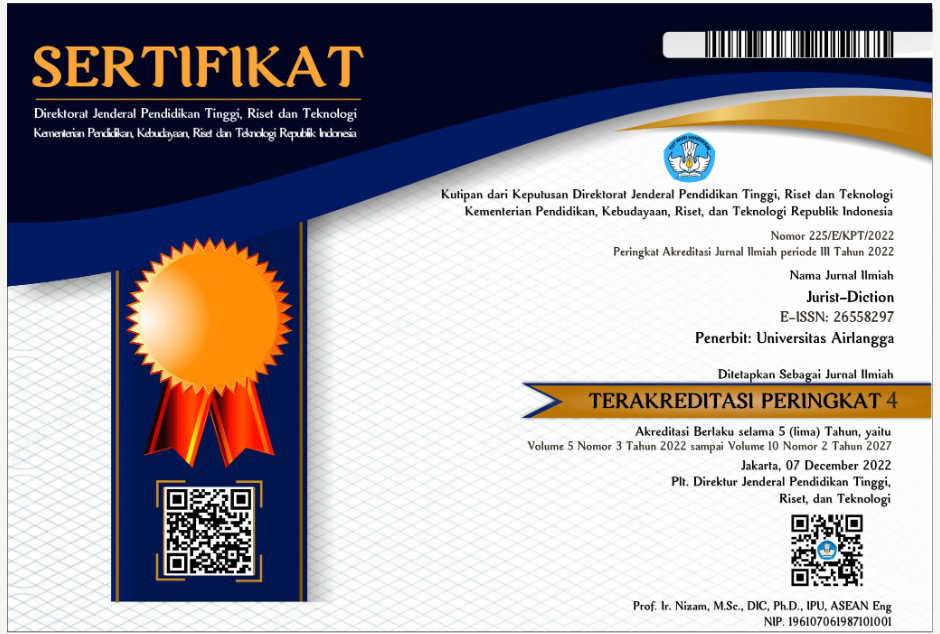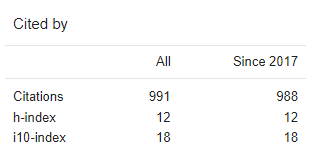Pembuktian Sederhana Pengajuan Permohonan Pailit oleh Pekerja Atas Dasar Upah yang Tidak Dibayar
Downloads
Abstract
Bankruptcy is a situation where the debtor is unable to perform the obligation to pay debts to his creditors. Which in this modern era is rampant cases of bankruptcy caused by a setback in the financial condition or financial condition of the debtor or company so that they cannot pay debts, one of which is wages as a form of compensation for workers in the company. Workers can submit bankrupt statements to the Commercial Court to their companies to claim their rights, but often the decision is rejected with one of the judges' judgment stating that it cannot be proven simply. Furthermore, when there are parties who are dissatisfied with the decision at the first level, namely the Commercial Court, the party can take further legal remedies namely Cassation to the Supreme Court and Review to the Supreme Court. The purpose of writing this research is to prove that the wages of unpaid workers meet the qualifications of simple proof if the wage shortage has been calculated by labor inspectors as regulated in Article 28 paragraph (1) of the Minister of Manpower Regulation No. 33 of 2016 concerning Labor Inspection Procedures.
Keywords: Bankruptcy; Simple Proof; and Workers.
Abstrak
Pailit merupakan suatu keadaan dimana debitor tidak mampu untuk melakukan kewajiban membayar utang-utang kepada para kreditornya. Yang mana pada era modern ini sedang marak terjadi kasus pailit yang disebabkan karena adanya kemunduran dalam kondisi financial atau kondisi keuangan si debitor atau perusahaan sehingga tidak dapat membayar utang yang salah satunya berupa upah sebagai bentuk imbalan untuk pekerja dalam perusahaannya. Pekerja dapat mengajukan permohonan pernyataan pailit ke Pengadilan Niaga terhadap perusahaannya untuk menuntut haknya namun seringkali putusan tersebut ditolak dengan salah satu pertimbangan hakim menyatakan tidak dapat dibuktikan secara sederhana. Selanjutnya ketika ada pihak yang kurang puas dengan putusan pada tingkat pertama yakni Pengadilan Niaga, pihak tersebut dapat melakukan upaya hukum selanjutnya yaitu Kasasi ke Mahkamah Agung dan Peninjauan Kembali ke Mahkamah Agung. Penelitian ini bertujuan untuk membuktikan bahwa upah pekerja yang tidak dibayar memenuhi kualifikasi pembuktian sederhana apabila kekurangan upah tersebut telah dihitung oleh pengawas ketenagakerjaan sebagaimana teratur dalam Pasal 28 ayat (1) Peraturan Menteri Ketenagakerjaan Nomor 33 Tahun 2016 tentang Tata Cara Pengawasan Ketenagakerjaan.
Kata Kunci: Kepailitan; Pembuktian Sederhana; dan Pekerja.
Buku
Elyta Ras Ginting, Hukum Kepailitan: Teori Kepailitan (Sinar Grafika 2018).
Hadi Shubhan, Hukum Kepailitan Prinsip; Norma dan Praktik di Pengadilan (Kencana 2015).
Lanny Ramli, Hukum Ketenagakerjaan (Airlangga University Press 2010).
Sutan Remy Sjahdeini, Hukum Kepailitan: Memahami Undang-Undang No. 37 Tahun 2004 tentang Kepailitan (Grafiti 2008).
Jurnal
Nelson Kapoyos, ‘Konsep Pembuktian Sederhana dalam Perkara Kepailitan' (2017) 10 Jurnal Yudisial.
Sularto, ‘Perlindungan Hukum Kreditur Separatis dalam Kepailitan' (2012) 24 Mimbar Hukum.
Laman
Hukum Online, Hak Pekerja untuk didahulukan dalam Perkara Kepailitan (Hukum Online 2017) <https://www.hukumonline.com/berita/baca/hol16924/hak-pekerja-untuk-didahulukan-dalam-perkara-kepailitan-/>, dikunjungi pada tanggal 1 September 2019.
Tesis
Maryana, Perlindungan Hukum Terhadap Hak-Hak Pekerja dalam Hukum Kepailitan (2010) Tesis Program Pascasarjana Fakultas Hukum Universitas Islam Indonesia.
Jurist-Diction (P-ISSN 2721-8392, E-ISSN 2655-8297), published by Universitas Airlangga, is licensed under the Creative Commons Attribution 4.0 International License (CC BY 4.0).
This license permits users to:
- Share – copy and redistribute the material in any medium or format;
- Adapt – remix, transform, and build upon the material for any purpose, including commercial use.
These freedoms are granted under the following conditions:
Attribution – You must provide appropriate credit, include a link to the license, and indicate if any changes were made. This may be done in any reasonable manner, but not in a way that suggests the licensor endorses you or your use.
No additional restrictions – You may not apply legal terms or technological measures that restrict others from exercising the rights granted under the license.
Note: As of Volume 5, No. 1 (2022), Jurist-Diction has adopted the Creative Commons Attribution 4.0 International License (CC BY 4.0), replacing its previous license (CC BY-NC-SA).


















